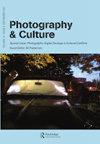The UNRWA Film and Photo Archive
IF 0.3
4区 艺术学
0 ART
引用次数: 0
Abstract
The digitization of archival photographic records is usually celebrated as a process that makes them accessible to multiple audiences who might have otherwise not been able to examine them so easily. It has equally been noted, however, that the very same process may lead to misrepresentations of records and generate evasive perceptions of their origin and historical significance. No doubt, these benefits and disadvantages may have significant implications in any context. Yet, their magnitude is likely to be of even greater consequence when the digitized records pertain to a long-lasting, ongoing violent conflict. The digital creation of the UNRWA Film and Photo Archive – readily accessible at https://unrwa. photoshelter.com – is one case in point. With its production beginning at a particular moment in the history of the Israeli-Palestinian conflict in which its two sides started to engage in direct talks about their shared future, the resulting digital archive demonstrates how photographs originally taken as mere records of institutional activities have, following their digitization, been made into volatile records of unpredictable political consequence. The acronym UNRWA stands for the United Nations Relief and Works Agency for Palestine Refugees in the Near East. A relief and human development organization, UNRWA was created by the United Nations in December 1949 with the intention of bringing relief and designing work programs for Palestine refugees in Jordan, Lebanon, Syria, the West Bank and the Gaza Strip. In May 1950 it became operational and has, since then, offered education, health care, social services and emergency assistance, while working to improve the infrastructure and general living conditions in the Palestinian refugee camps located within the boundaries of these countries and lands. Similar to many other humanitarian organizations, over the years UNRWA has commissioned photographers and filmmakers to document its pursuits, mainly for communication and fundraising purposes. Their works have been preserved in a physical voluminous audio-visual archive. Split since 1996 between UNRWA’s two Headquarters in Amman (Jordan) and Gaza, it contains over 600,000 records, including approximately 459,000 black and white photo negatives, a few hundred photographic prints, 58,000 color slides, 15,000 contact sheets, 75 films, 730 videocassettes and an estimated 80,000 born-digital images.近东救济工程处电影和照片资料馆
档案摄影记录的数字化通常被誉为一个过程,它使许多观众能够访问这些记录,否则他们可能无法如此容易地检查这些记录。然而,同样值得注意的是,同样的过程可能会导致对记录的歪曲,并对其起源和历史意义产生回避的看法。毫无疑问,这些好处和缺点在任何情况下都可能产生重大影响。然而,当数字化记录涉及长期、持续的暴力冲突时,其规模可能会产生更大的影响。近东救济工程处电影和照片档案馆的数字化创建——可在https://unrwa.photoshelter.com就是一个很好的例子。它的制作始于以巴冲突历史上的一个特殊时刻,在这个时刻,双方开始就共同的未来进行直接对话,由此产生的数字档案展示了最初作为机构活动记录拍摄的照片在数字化后,被制成了不可预测的政治后果的不稳定记录。缩写近东救济工程处代表联合国近东巴勒斯坦难民救济和工程处。近东救济工程处是一个救济和人类发展组织,由联合国于1949年12月成立,旨在为约旦、黎巴嫩、叙利亚、约旦河西岸和加沙地带的巴勒斯坦难民提供救济和设计工作方案。1950年5月,它开始运作,并从那时起提供教育、医疗保健、社会服务和紧急援助,同时努力改善位于这些国家和土地边界内的巴勒斯坦难民营的基础设施和一般生活条件。与许多其他人道主义组织类似,多年来,近东救济工程处委托摄影师和电影制作人记录其活动,主要用于沟通和筹款目的。他们的作品被保存在一个庞大的音像档案中。自1996年以来,它分为近东救济工程处安曼(约旦)和加沙两个总部,共有60多万份记录,包括约459000张黑白底片、几百张照片、58000张彩色幻灯片、15000张联系单、75部电影、730个录像带和估计80000张出生的数字图像。
本文章由计算机程序翻译,如有差异,请以英文原文为准。
求助全文
约1分钟内获得全文
求助全文

 求助内容:
求助内容: 应助结果提醒方式:
应助结果提醒方式:


